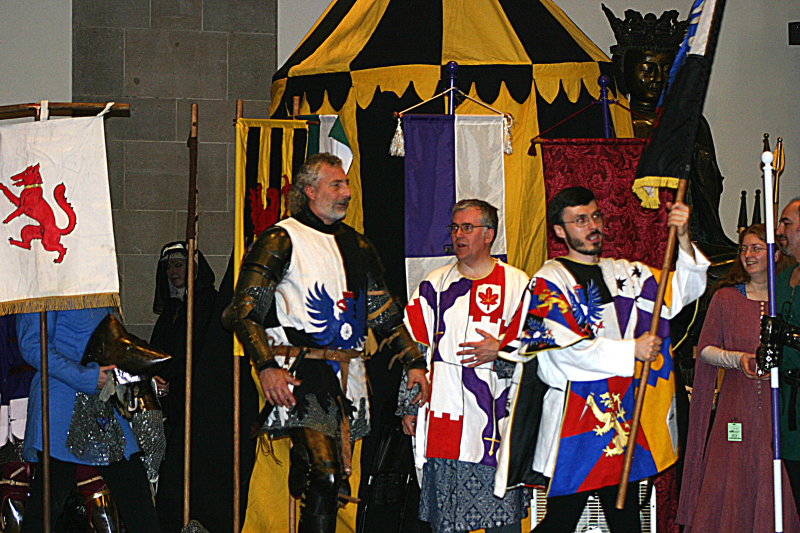 |
| Figure 1: L-R: David Cvet, David Rumball (Appellants' Herald), Matt Dreger (Defendants' Pursuivant) - photo by Jim Atack |
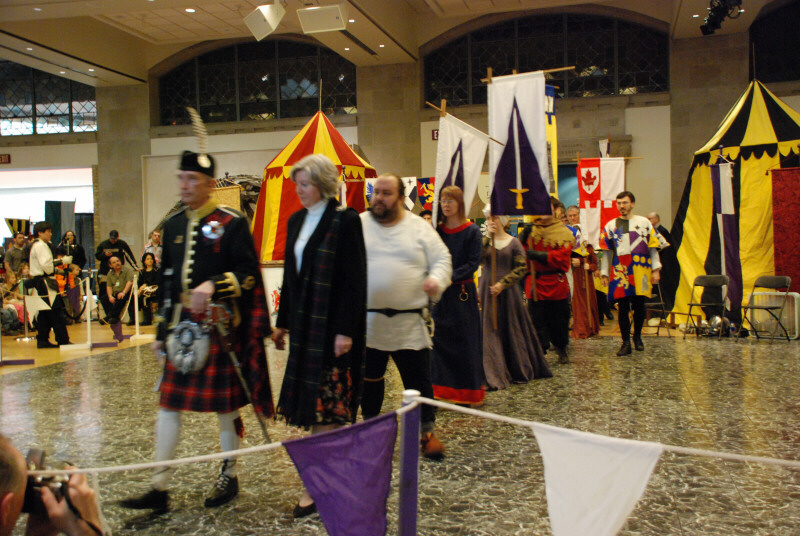 |
| Figure 2: Robbie Sprules and his wife, Lucinda lead the opening procession into the fighting lists - photo by Gail J. Smith |
The most notable aspect of the tournament from a heraldic perspective was the opening ceremony, in which the tournament officials including two Heralds and two Pursuivants all wearing exceptional
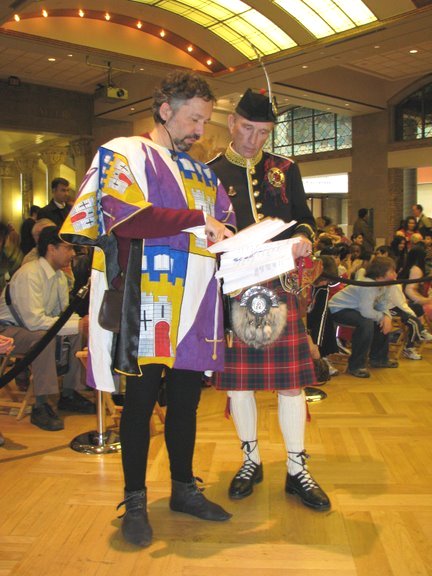 |
| Figure 3: Dr. Robert Mason and Robbie Sprules reviewing the combatants list - photo by Peter Yu. |
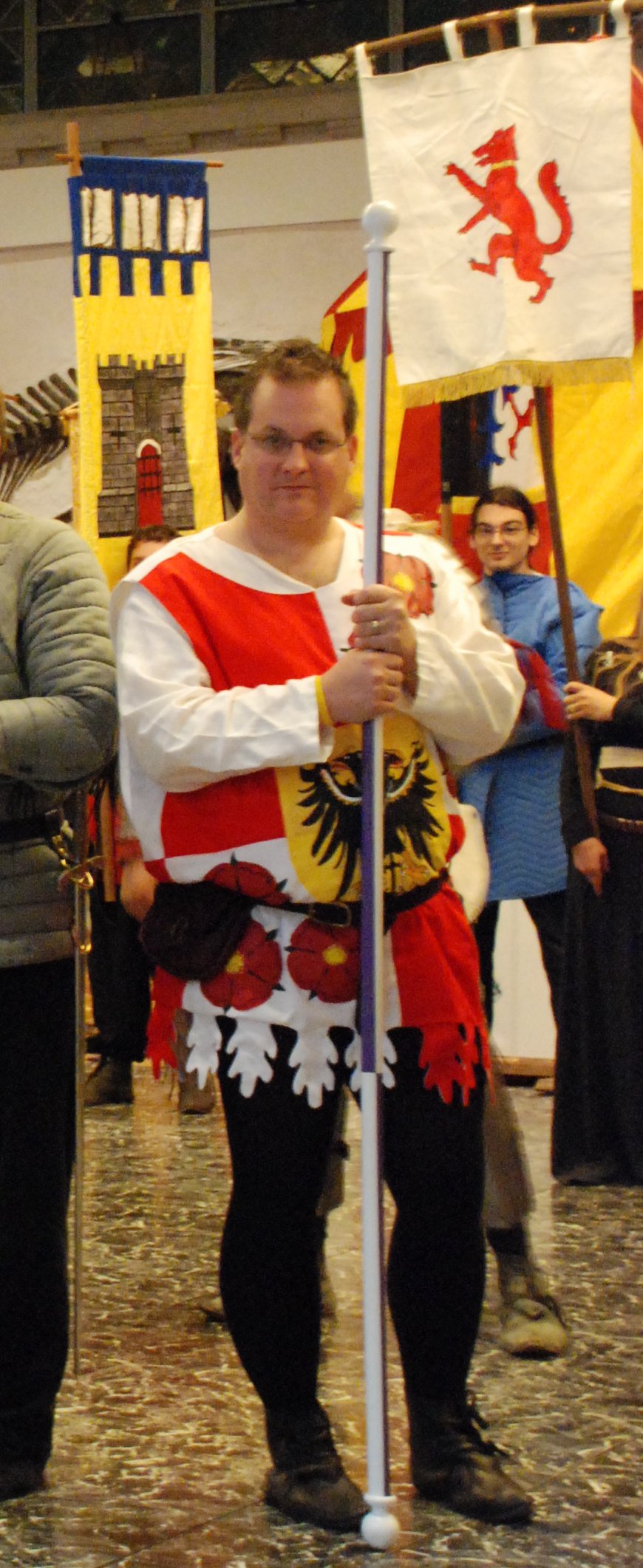 |
| Figure 4: Russ Howe wearing his jupon depicting his arms, clearing indicating Austrian origins - photo by Gail J. Smith |
The Appellants' Pursuivant's tabard (not shown) bears the arms of the current armoured combatants who form the OMSG group in Ottawa. There are eight arms on that tabard as well.
Some of the tournament volunteers also wore their jupons, even though they were not participating in the armoured bouts. One such individual was Russ Howe, a member of AEMMA who will be ready for the armoured tournament in 2009, and who is also a member of the Society.
The tabards were created by an AEMMA student by the name of Ralf Siferd and his wife Ruth. They had generously donated all four tabards including their time and materials to AEMMA. These will be used for many years to come.
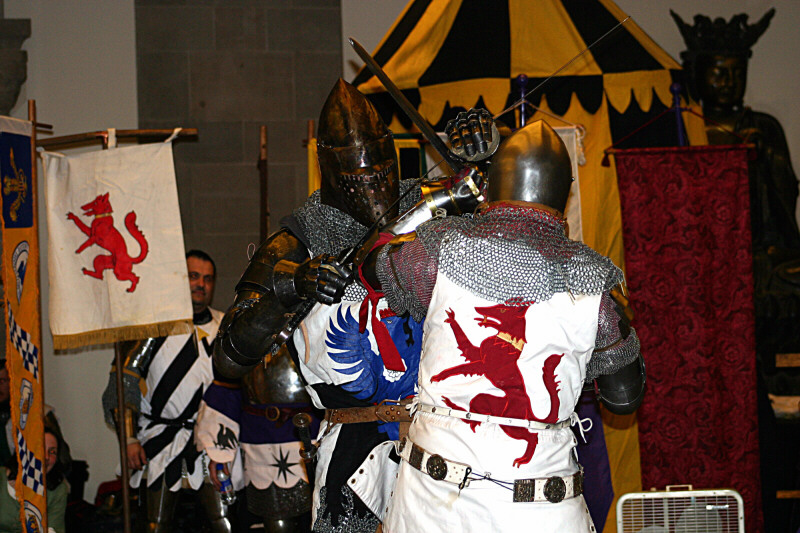 |
| Figure 5: David Cvet battling Dale Gienow from Muskoka with steel longswords - photo by Jim Atack |
1. three landed blows with the point within the limbs and neck,
2. unbalanced and cast down,
3. forced from the lists,
4. disarmed of all weapons carried.
In all, twenty combats were conducted throughout the afternoon, each appellant free to choose the weapon or weapons of choice for the bout. At the conclusion of the tournament, the outcome was an equal number of victories for the Appellants and Defendants.
Mathieu Ravignat from the OMSG, and also, a recent member of the Society, was awarded by Lady Lucinda, wife of the Lord of Wrentnall a ceremonial Scottish Great Sword being identified as the "best amongst equals".
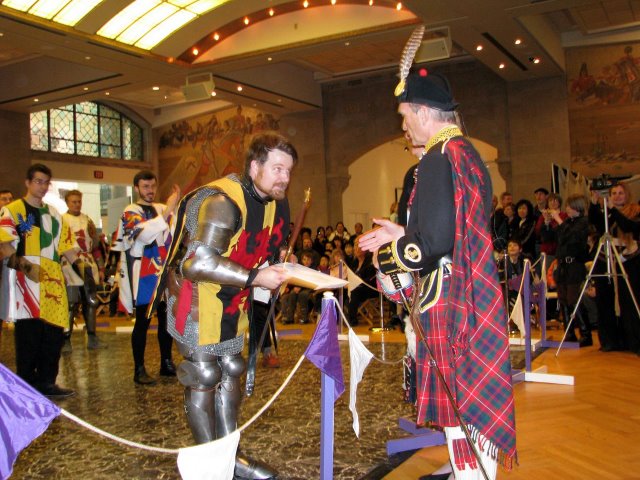 |
| Figure 6: Mathieu Ravignat accepting the award from Robbie Sprules and Lady Lucinda for "best amongst equals" - photo by Gail J. Smith |
It was remarked by many spectators, who offered their comments after the tournament, that they had never seen anything like this and all were suitably impressed. The ROM was also very happy with the event and expressed a desire to pursue this again next year. The ROM on that Saturday was capacity, with hundreds upon hundreds of people awaiting entry into the ROM, lining eastward on Bloor St. and south on University Ave. It had the appearance of a lineup to a “rock concert”!
1. three landed blows with the point within the limbs and neck,
2. unbalanced and cast down,
3. forced from the lists,
4. disarmed of all weapons carried.
In all, twenty combats were conducted throughout the afternoon, each appellant free to choose the weapon or weapons of choice for the bout. At the conclusion of the tournament, the outcome was an equal number of victories for the Appellants and Defendants.
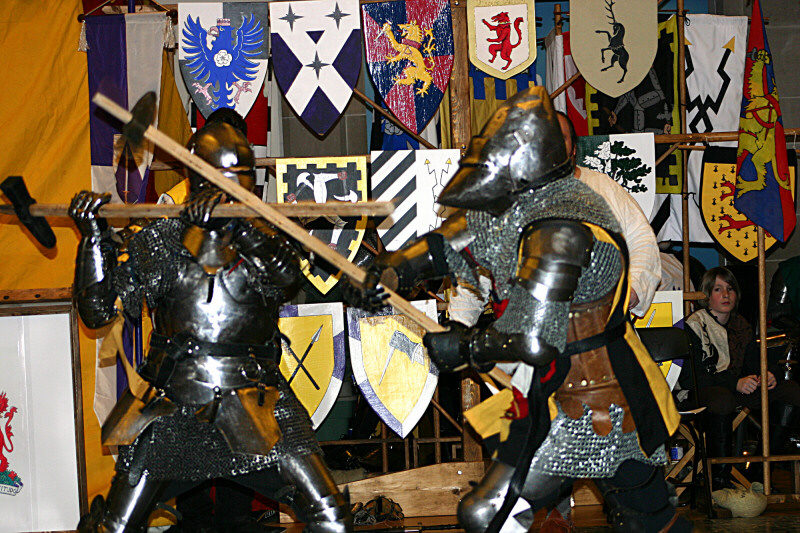 |
| Figure 7: David Murphy battling Mat Ravignat (OMSG) with poleaxe - photo by Jim Atack |
Mathieu Ravignat from the OMSG, and also, a recent member of the Society, was awarded by Lady Lucinda, wife of the Lord of Wrentnall a ceremonial Scottish Great Sword being identified as the "best amongst equals".
After the tournament, a good number of combatants and other participants, friends and family attended the medieval banquet at AEMMA's salle d'armes. With the salle beautifully decorated with arms of all of the combatants depicted on wooden shields, standards, banners, wrought iron candelabras, a medieval musical ensemble and demonstrations of medieval dancing, the banquet achieved what it may have been like in the medieval period. After some remarks and short speeches, Lady Lucinda awarded to each of the armoured combatants a tournament medallion. The medallions were created by an AEMMA student Nicolas Facundo-Rico.
The ROM and AEMMA will host another tournament mid-March in 2009 once again, with the possibility of turning this into an annual event. Being the first time, some minor adjustments and tuning will be required resulting in an event which will be even more spectacular next year!
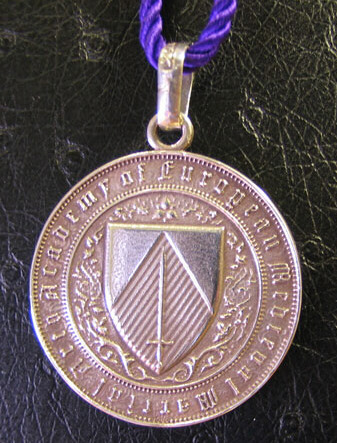
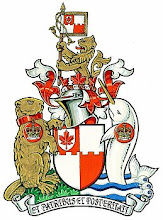
1 comment:
I visited the ROM with my wife and three teen-aged grandchildren on Saturday, the last available day of the March Break. We spent most of our visit attending the medieval tournament, which was for all of us was the most exciting event we have witnessed in many years of ROM visits. Other than being a little slow in getting started, this was an action-filled event that gave a remarkable insight into a number of aspects of medieval life that are not well covered in schools. It was particularly interesting in that this was patently not a staged "re-creation", but the real thing. As a student of heraldry (as is one of my granddaughters -- starting in Grade 4), I found the event's concentration on the colour and pageantry of the tournament well done and fascinating. We had trouble getting the kids away to see other aspects of the museum. Well done, and congratulations on a new and unique display!
Kevin Greaves, MD
Post a Comment